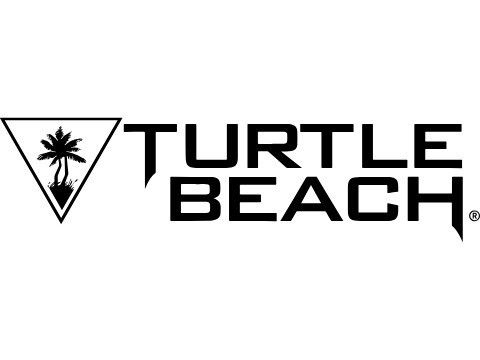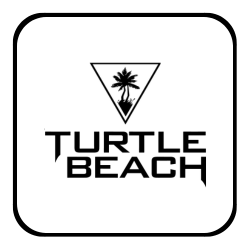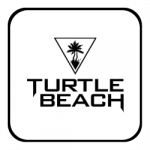
Turtle Beach Corporation (NASDAQ: HEAR) is an audio and gaming technology company based in White Plains, NY, USA. Turtle Beach develops, commercializes, and sells headsets and other entertainment-related peripherals under the Turtle Beach and Roccat brands in the US, Europe, and the Middle East. Roccat is its PC peripherals brand, which sells PC gaming keyboards, mice, and other accessories. The Turtle Beach brand sells headsets for Xbox, PlayStation, and Nintendo consoles, and for PCs and mobile devices. It also sells USB microphones under its Neat Microphones brand.
Turtle Beach began as a digital music technology company in 1975, developing MIDI (musical instrument digital interface) products and sound cards for early computers in the 1980s. The company rebranded as a digital headset manufacturer in 2005. It went public in 2014 by merging with a publicly traded technology company. It bought Germany’s Roccat in 2019.
The company’s stock followed the tech sector’s volatile trend over the Covid Pandemic period, falling in early 2020 and then rising over 800% to a high of $37.69 in June 2021. It then gave back all those gains in 2022 before recovering to $11.24 as of this writing on June 1, 2023.
Equity analysts disagree on its prospects, but most are bullish. Schwab assigns it a sell rating, Thomson Reuters, Zacks, and MarketEdge assign it buy or long ratings, and CFRA assigns it a hold rating.
Table of Contents
A Brief Outlook of Turtle Beach
Turtle Beach Fundamental Data
Turtle Beach Stock Forecast 2023
Even with caution on the part of some of the eight analysts who follow HEAR, their median stock price target for this year is $20 (with a $10 low and $30 high). Their short-term price targets, aggregated by Zacks in May, ran between $14 and $16, meaning the optimistic projection would translate into a 37% upside.

Company Fundamentals
The bulls are sanguine about the company’s fundamentals and mostly build their cases on technical factors, which we will address below. The company’s fundamentals have deteriorated in recent years. Its gross margin has shrunk from 37.15% in 2020 to 20.48% in 2022 (about where it remains as measured on a TTM basis). Its net profit margin (or return on sales) was a dismal 24.40% on a TTM basis.
This is not an industry-wide problem. Most of its peers reported positive net profit margins, with one, Immersion Corp., reporting an 88.59% return on sales on a TTM basis.
Turtle Beach’s earnings per share has also fallen sharply, from $2.37 in 2020 to -$3.62 in 2022. It is expected to pare its EPS loss this year to 35 cents, according to analysts surveyed by Schwab.
HEAR boosters point out that, after missing earnings estimates in the second, third, and fourth quarters of 2022, it beat them in the first quarter of 2023. (They were still negative, at -27 cents a share.) Analysts expect the company to beat estimates again when it releases its second-quarter results in August, and for it to record positive earnings beginning in the fourth quarter of this year.
The company’s fundamentals are a function of its market and operational strengths and weaknesses. Its main strengths include:
- It has executed successful M&A deals with complementary companies;
- It has reliable suppliers;
- It has a strong distribution network;
- It has respected brands;
- It has a high level of customer satisfaction;
- It has a history of successful innovation, from MIDI devices, to sound cards, to gaming peripherals.
Its weaknesses are:
- Its return on assets, which is a measure of management efficiency, is very low, at -33.7 for the TTM period, versus 4.9 for the S&P 500.
- It has a high employee attrition rate, forcing it to spend a lot on training;
- It has been unsuccessful in expanding outside its core area of expertise;
- It has been less successful in merging with companies that have different cultures;
- It is at the mercy of demand trends in the gaming industry;
- Its margins were eroded last year by the increased marketing costs needed to offset competitive discounting by its competitors, especially during the tech market slump last year.
Of direct concern to potential investors is its TTM return on equity, where it severely lags its peer group.
- Turtle Beach: -54.06%
- Immersion Corp.: 21.91%
- AstroNova Inc.: 3.22%
- Intevac Inc.: -10.71%
- Transact Technologies: 2.19%
(Source: Schwab Equity Ratings Report, May 26, 2023)
The company’s performance has not gone unnoticed by short sellers. Its short-interest ratio in early June was 3.24 days, slightly higher than a month earlier. This is the highest short-interest ratio among its peer group. Immersion had 1.39 days, and even Intevac, the group’s second-biggest underperformer on a ROE basis, had only 0.65 days.
However, the company is taking steps to improve performance. In early May it announced plans for a committee to find ways to maximize value for shareholders, including strategic transactions (meaning M&A, divestitures, and the like). Its stock rose 3% on the news.
Stock Technicals
Analysts who are bullish on HEAR derive that view from the stock’s technicals. MarketEdge’s May 26 note is representative of the arguments the technical bulls make:
“The current technical condition for HEAR is strong and the chart pattern suggests that upward momentum should continue. The stock has outperformed the market over the last 50 trading days when compared to the S&P 500. MACD-LT, an intermediate-term trend indicator, is bullish at this time. HEAR’s chart formation indicates a strongly rising trend. Upside momentum, as measured by the 9-day RSI indicator is positive but is beginning to slow. Over the last 50 trading sessions, there has been more volume on down days than on up days, indicating that HEAR is under distribution, which is a bearish condition. The stock is trading above a rising 50-day moving average. This validates the strong technical condition for HEAR. The stock is above its 200-day moving average which is pointed up indicating that the intermediate-term trend is bullish.”
Risks
The principal risks for investors in Turtle Beach are that its fundamentals fail to improve, it misses earnings expectations in the second quarter, and/or its technology is eclipsed by changes in demand (say, due to innovations in AI or the “metaverse”), which it cannot react to in a timely fashion.
Mitigants
Investors may want to use puts to hedge part of their holdings prior to the August earnings announcement, in case there is unexpected bad news. At-the-money put options on Turtle Beach expiring on August 18, after the earnings call, were available at a bid/asked spread of $1/$1.15 on June 2. This was 30 cents cheaper than their 52-week high, and that decline in put option premia reflects bullish market sentiment about the stock.
Investors can also consider traditional – and usually free – hedging strategies like using stop loss orders and/or trailing stop orders. The latter can be set up and allowed to run automatically; they do not limit upside but protect an investment from a loss of more than a given dollar amount or percentage, which the investor chooses.
A Historical Look at Stock Price History of Turtle Beach
Turtle Beach Stock 2022
As noted above, Turtle Beach’s stock fell consistently over the course of 2022, as the previous year’s fillip in Covid-related stay-at-home gaming and entertainment demand was satisfied. Unlike FAANG tech shares that remained in the black for much of 2022, Turtle Beach is neither a subscription-based model (like NetFlix) nor an advertising model (like social media companies) so once demand for its products was satisfied, sales fell.
Earnings turned negative in the first quarter. They went from minus 40 cents a share in the first quarter to minus $1.40 in the fourth.
The shares lost over two-thirds of their value, ending the year at $7.84.
Turtle Beach Stock 2021
Turtle Beach’s stock in 2021 benefitted from the Covid stay-at-home rules which encouraged gaming and home entertainment purchases. Unlike Koss, it was never a meme stock and did not get the Robinhood boost. Nonetheless, its stock rose from $20.8 at the beginning of the year to hit a high of $38.7 in June, before the increase in demand for its products was sated and its shares returned to close the year at about $22.
Conclusion
The median 2023 price target for Turtle Beach’s shares among the eight houses that follow it is $20. That is based on the performance of its competitors, which, unlike Turtle Beach, have positive earnings (except for one), and on technical factors. Since Turtle Beach’s shares are currently trading around $11.25, approaching that target would mean a return of over 75%. Even investors who hedged half of their holdings with puts could (depending on the size of their position) come away with a 25-50% net return.
Whether that is the beginning of a trend, a flash in the pan, or simply wishful thinking on the part of perennially over-optimistic equity analysts has yet to be seen. Investors should consider the larger-than-peer-group short interest in Turtle Beach, and whether its new committee to “maximize shareholder value” could do that, perhaps by selling the company at a premium to a Meta or Microsoft, or whether it is just standard corporate window dressing, rolled out to keep activist investors quiet. In any case, potential investors should look carefully at the company’s financials, and listen to its earnings calls to understand its potential before placing their trades.
FAQs
Will Turtle Beach’s Stock Continue its Rebound?
The median 2023 stock price forecast of the equity analysts that follow HEAR is $20. If they are right, that would be a significant rebound from its current level of $11.25, and could mean a large return for investors, even those that pay to hedge their positions with put options.
What are Turtle Beach’s Biggest Challenges?
The company is up against well-capitalized competitors in an industry that is changing quickly. Its management has proven itself inefficient in the exploitation of the company’s resources, as reflected in its negative 33.7% return on assets ratio.
What is the Next Big Event to Watch Out For?
The company’s August 8 earnings announcement will show whether analysts are right to expect a continuing rebound of the company’s stock. The company beat estimates in the first quarter, but earnings were still negative (minus 27 cents per share). If it continues to show improvement in earnings, gross margin (which has been shrinking for several years), and strategic direction, those factors should support the thesis that the company’s stock price will rise.
WeInvests is a financial portal-based research agency. We do our utmost best to offer reliable and unbiased information about crypto, finance, trading and stocks. However, we do not offer financial advice and users should always carry out their own research.
Read More








